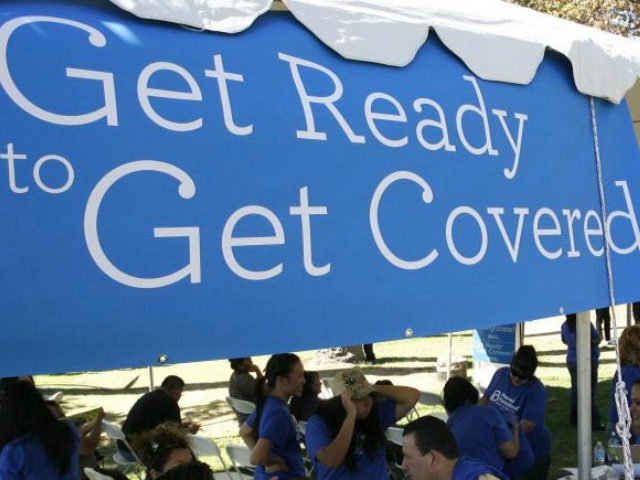
Health care wonks are crowing about a “November surge” in enrollment. Will the November surge will be able to make up for the October purge, i.e. the millions who were dropped from existing plans because of Obamacare’s new minimum standards for coverage? In California, there is reason to think it may not.
In a piece posted at Wonkblog Friday, author Sarah Kliff introduced the term “November surge” into the discussion of enrollment figures. According to Kliff, the uptick in enrollment, especially in California, is reason for optimism:
Some state-based marketplaces had a pretty smooth launch, and are seeing the pace of enrollment speed up daily. California has lead [led] the bunch; the state’s enrollments have grownsteadily in November and now account for nearly a full third of allhealth law sign-ups. The state has had its strongest two weeks ofenrollment this month.
The enrollment surge in California, and the idea that it was part of a broader pattern, was first reported by LA Times health writer Noam Levey a week ago. Levey’s piece was widely quoted, including by Sarah Kliff, but his claims did not stand up to much scrutiny. For instance, Levey claimed that Kentucky was “outpacing” its enrollment estimates. A spokesperson for the state says no such estimates exist.
Both Levey and Kliff fail to ask the most important question. How soon will current enrollment trends balance out the number of people who have been dropped from their insurance as a result of Obamacare grandfathering regulations? In other words, can a November surge make up for the October purge?
Health insurance expert Bob Laszewski suggests California has a long way to go before the net enrollment shows a gain. He lays out the figures in a post published Monday:
- California has 5.3 million uninsured eligible to buy in the exchange with half estimated to be subsidy eligible.
- California is cancelling another 1.1 million people of which Covered California has estimated 510,000 qualify for a subsidy they can only get if they go to Covered California. At least 80% need to act by December 23 to avoid losing their coverage.
- The state is spending $250 million in federal money to get people signed up–dramatically more than any other state.
- The Covered California goal is to sign-up 500,000 to 700,000 subsidy eligible people by March 31.
Laszewski concludes “Looking at these numbers, if they don’t have well more than 500,000people signed up by December 31, I would have to think the number ofuninsured in California would have grown.”
Any fair accounting of the enrollment figures needs to keep in mind the number of people who–contrary to the President’s oft-repeated promise–have been kicked off plans they had. In California the enrollment figures for November have improved but they are still a long way from bringing the state back to where it was before the cancellation notices went out.

COMMENTS
Please let us know if you're having issues with commenting.